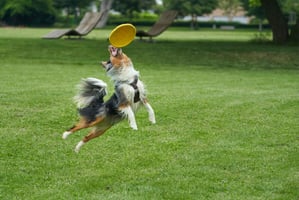Training a Bichon Frise can be a difficult challenge, but with the right knowledge, you can help...
The Fundamentals of Canine Training
Canine training is a crucial part of owning a dog. It helps to ensure that your pet is safe and well-behaved and can be a rewarding experience for both the pet and the owner. In this article, we’ll cover the basics of canine training and how to get started with teaching your pup new skills. Read on to learn more!
Understanding Canine Training
Canine training is the process of teaching a dog to understand and obey commands. It is important to begin training your dog as soon as possible to ensure that they develop good habits and learn the rules of your home. Training should be a positive and rewarding experience for both you and your pet. This will help to ensure that your pet is happy and behaves properly.
It is important to remember that canine training is not a one-time event. It should be an ongoing process that is continued throughout the life of your pet. As your dog grows, their needs and capabilities will change, so it is important to adjust your training program accordingly.
Creating a Training Plan
Before you begin canine training, it is important to create a plan for how you will approach the process. Start by setting realistic goals for what you want your pet to learn. Consider the age and breed of your dog, as well as their individual personality and needs.
When creating a training plan, it is important to be consistent. Stick to a regular schedule and use the same commands and rewards each time. This will help your pet to learn more quickly and will make the training process easier.
The Basics of Canine Training
There are a few basic commands that every canine should learn. These include:
- Sit: This command is used to get your dog to sit down and stay in one place.
- Stay: This command is used to get your dog to stay in one place and not move.
- Come: This command is used to get your dog to come to you.
- Down: This command is used to get your dog to lie down.
- Leave it: This command is used to get your dog to stop paying attention to something.
These basic commands are a great starting point for canine training and will help to set the foundation for teaching your pet more advanced skills. Once your pet has mastered these commands, you can begin teaching them more complicated skills.
Rewards and Positive Reinforcement
When it comes to canine training, it is important to use rewards and positive reinforcement. This means that when your dog does something correctly, they should be rewarded with a treat or a toy. This will help to reinforce the behavior and will make it more likely that your pet will repeat it in the future.
It is important to remember that rewards should only be given when the desired behavior is exhibited. If your pet does something wrong, it is important to respond firmly and consistently. Do not use physical punishment as this will only lead to confusion and can damage the bond between you and your pet.
Conclusion
Canine training is an important part of owning a dog and can be a rewarding experience for both you and your pet. Before you begin training your pet, it is important to create a plan and set realistic goals. Start with the basics and be consistent and patient. Use rewards and positive reinforcement to encourage desired behaviors and you’ll be well on your way to having a happy and well-behaved pup!



